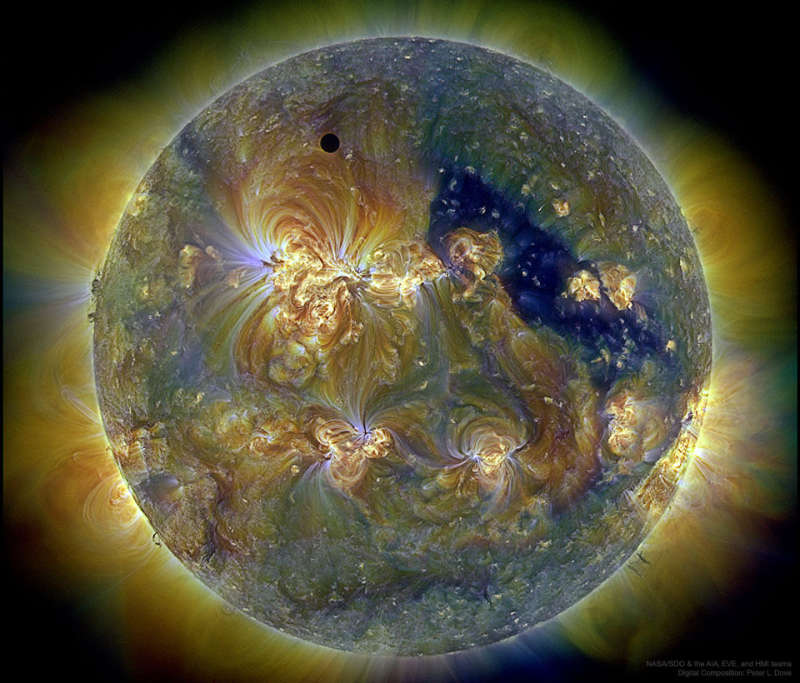Venus and the Triply Ultraviolet Sun

Explanation:
An unusual type of solar eclipse occurred in 2012.
Usually it is the
Earth's Moon that
eclipses the Sun.
That year, most unusually, the planet
Venus took a turn.
Like a
solar eclipse by the Moon, the
phase of Venus became a continually thinner
crescent as Venus became increasingly
better aligned with the Sun.
Eventually the alignment became perfect and the
phase of Venus dropped to zero.
The
dark spot of Venus crossed our parent star.
The situation could technically be labeled a Venusian
annular eclipse with
an extraordinarily large
ring of fire.
Pictured here during the occultation, the Sun was imaged in three colors of
ultraviolet light by the Earth-orbiting
Solar Dynamics Observatory,
with the dark region toward the right corresponding to a
coronal hole.
Hours later, as Venus continued in its orbit, a
slight crescent phase appeared again.
The next
Venusian transit across the Sun will occur in
2117.
Authors & editors:
Robert Nemiroff
(MTU) &
Jerry Bonnell
(USRA)
NASA Web Site Statements, Warnings,
and Disclaimers
NASA Official: Jay Norris.
Specific
rights apply.
A service of:
LHEA at
NASA /
GSFC
& Michigan Tech. U.

